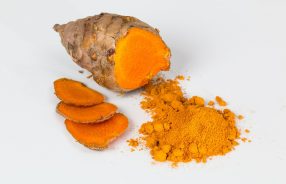Alcohol-Related Neurologic Disease: Types, Signs, Treatment
Don’t do this yourself because you could hurt yourself further, cause an infection, and slow your healing process. People with hemophilia don’t make much of several blood clotting factors, such as factor VIII and factor IX. These are https://ecosoberhouse.com/ rare, but they can be life-threatening if you don’t treat them. If you’re having nosebleeds for no reason, if your gums bleed a lot after you brush or floss, or if small cuts or scrapes seem to bleed heavily, call your doctor.
- Fibromyalgia is a chronic pain condition that causes body and joint pain and tenderness, fatigue, cognitive changes, and difficulty sleeping.
- While bumping into something while drinking may seem relatively harmless, the truth is that excessive drinking can set you up for serious injuries from falling or other accidents.
- One of the earliest signs of alcohol abuse is a persistently red face due to enlarged blood vessels (telangiectasia).
- For a quick and easy lunch, you can also make a vegan chowder or a vegan minestrone.
This phenomenon is more common in women, affecting around 60% of cases, than in men, in whom it affects around 50% of cases. Unfortunately, nothing can prevent reactions to alcohol or ingredients in alcoholic beverages. To avoid a reaction, avoid alcohol or the particular substance that causes your reaction.
Does alcohol affect your iron levels?
A bruise is a discoloration of the skin that results from a break in the small blood vessels beneath the surface of the skin. Usually, bruises are caused by a direct blow or fall, but they can also appear as a result of alcohol use. Alcohol can cause blood vessels to weaken and break, leading to bruising and discoloration of the skin. It is important to understand the effects of alcohol on bruising and how you can protect your skin from further damage. Alcohol consumption has always been a point of contention among health professionals and the public alike. On one hand, there is research to suggest that moderate alcohol consumption has some health benefits.
Someone who lives with an alcohol use disorder may experience lasting brain changes that make it difficult to stop drinking. If you’re aware that drinking is causing health problems, such as liver issues and bruising from alcohol, but you’re unable to stop drinking on your own, it’s time to seek treatment. Finally, one potentially serious cause of alcohol and bruising is alcohol liver disease. As liver functioning declines from chronic alcohol misuse, a person is likely to bleed and bruise easily.
What are the short and long-term effects of alcohol on the skin?
Also, if your symptoms seem to be linked to an allergy or a medication you’re taking, see your doctor. Combining alcohol with certain medications also can cause alcohol and bruising reactions. Some of the symptoms of alcoholic neuropathy can be partially reversed. But if the neuropathy becomes advanced, it might not be reversible.
- Below are frequently asked questions relating to the color of bruising.
- Finally, a person with an alcohol use disorder will likely give up other activities, because their focus is on drinking.
- Heidi Moawad is a neurologist and expert in the field of brain health and neurological disorders.
- If you experience increased bruising, don’t stop taking your medications.
- If you’re aware that drinking is causing health problems, such as liver issues and bruising from alcohol, but you’re unable to stop drinking on your own, it’s time to seek treatment.
- Once you stop alcohol intake, a doctor can address your specific symptoms.
- Read beverage labels to see whether they contain ingredients or additives you know cause a reaction, such as sulfites or certain grains.
Bruises may be a part of everyday life, but – as with many things – just being aware of your own body’s tendencies can give you a warning when something goes awry. If you have anemia — especially anemia that isn’t well managed — avoiding alcohol is the best option to prevent complications. But in general, significantly reducing how much alcohol you drink can make a difference. Alcohol is one of several substances that can damage your liver. Excessive alcohol consumption can cause fat to build up in your liver. This can lead to inflammation and an increase in scar tissue, which can seriously impact your liver’s ability to function as it should.
What are the most common causes of Antiphospholipid Syndrome?
Micro-bleeds form at the location of these unnoticeable injuries and clotting factors along with the platelets take care of these micro-bleeds. When some of these factors are lost or dysfunctional your body will not be able to fix these micro-bleeds and they will turn into bruises. While bumping into something while drinking may seem relatively harmless, the truth is that excessive drinking can set you up for serious injuries from falling or other accidents.
- Although the classic ‘drinker’s nose’ (rhinophyma) was thought to be related to excess alcohol consumption, it has never been proven.
- In addition, about 40 to 60 percent of people who experience chronic alcohol misuse also experience alcohol-related myopathy.
- But here’s what the current research suggests about the effect that alcohol may have on fibromyalgia symptoms.
Along with harming the liver, this condition is also linked with damage to the pancreas, heart, endocrine glands, and even your joints. Despite this promising research, it’s important to remember that alcohol affects everyone differently. Even if there may be benefits for some people, there are also risks ― especially if you take certain medications or have other conditions that can make drinking alcohol dangerous.





